| | Our April issue of RCC Bird Watch and Wonder comes to you happily during Earth Week as we head into the glories of spring migration. It is a time to celebrate the wonders of nature and focus on what we humans can do and have done to create a more just, sustainable – and beautiful world. There are, of course, the already predictable moves by Donald Trump (no bird-watching wimp like Teddy Roosevelt is he…) to undo, roll back, or eliminate the protections for birds, endangered species, wetlands, marine conservation areas, and more. The President, instead, best fits the pithy description Rachel Carson gave of where such arrogance has led us. “The modern world worships the gods of speed and quantity, and of the quick and easy profit, and out of this idolatry monstrous evils have arisen." But Carson, the consummate birder and naturalist, believed that observing, empathizing with, and learning to love the birds and other creatures far different than ourselves would lessen our urge to harm or destroy them. That is her true legacy, one that undergirds Earth Day and leads growing numbers of Americans to watch, paint, film, feed, and otherwise describe and protect the amazing world of birds and the habitats they need if they, and we, are to survive and thrive. In “RCC Fellows Speak Out,” Clarissa Casper, for example, writes how Carson’s legacy persists at the Bear River National Refuge in Utah despite Trump’s recent reductions of USFWS staff there. So long as birders, young and old, still come, still marvel at the thousands of Tundra Swans and other birds who migrate to the refuge that Carson described in Conservation in Action, there is hope far beyond the dark and dangers of the present. 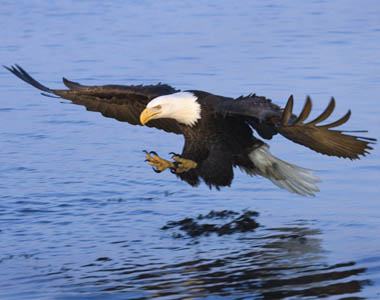 Such love, persistence, and action is why Ross Feldner, in our “Bird Lore” section, is able to recount in “The Bald Eagle – A True American Success Story” the long and inspiring history of birders and environmentalists fighting and ultimately succeeding in saving and protecting our national symbol, the Bald Eagle, that had nearly reached extinction. Such love, persistence, and action is why Ross Feldner, in our “Bird Lore” section, is able to recount in “The Bald Eagle – A True American Success Story” the long and inspiring history of birders and environmentalists fighting and ultimately succeeding in saving and protecting our national symbol, the Bald Eagle, that had nearly reached extinction.
Let us celebrate that such caring and concern for our feathered friends continues even as I write. In our section on “Climate and Ecology,” marvel at Jon Dare who traded in his BB gun for binoculars at age 10 and within a year had counted over 150 bird species near his home in Harlingen, Texas. Now Dare is slowly, systematically working to restore the Tamaulipa thorn forest in which countless bird species once thrived before 1,000,000 acres on both sides of the U.S.-Mexican border were destroyed by development. We also bring you a number of tips and actions you can take to help in your own neighborhood – from how to fix your feeders to prevent disease to smart feeders that are attracting a new generation of tech savvy bird watchers who enjoy seeing live closeups of their birds on camera. 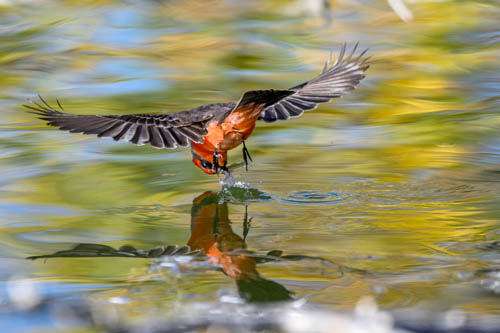 And don’t miss one the most spectacular set of photos of birds ever in “Bird Art.” Arizona photographer Jeffry Scott captured beautiful Vermillion Flycatchers diving into the water and catching fish – a behavior never known or documented before. And don’t miss one the most spectacular set of photos of birds ever in “Bird Art.” Arizona photographer Jeffry Scott captured beautiful Vermillion Flycatchers diving into the water and catching fish – a behavior never known or documented before.
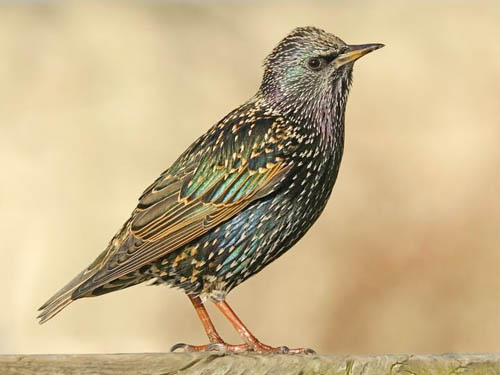 There is far more in our April, Earth Week issue of Bird Watch and Wonder, but please take a look at my piece in our “Books” section. I write there about an amazing author previously unknown to me who has written one of the most fascinating and profound bird books ever. Rachel Carson once wrote in praise of the long-detested starling. Mike Kelly not only follows her lead in his new book, Starling, he writes with the same kind of luminous prose and love for this much maligned bird that made Carson a beloved, best-selling writer. Books and birds and birders change lives and give us hope. That is what springtime and Earth Day is all about. There is far more in our April, Earth Week issue of Bird Watch and Wonder, but please take a look at my piece in our “Books” section. I write there about an amazing author previously unknown to me who has written one of the most fascinating and profound bird books ever. Rachel Carson once wrote in praise of the long-detested starling. Mike Kelly not only follows her lead in his new book, Starling, he writes with the same kind of luminous prose and love for this much maligned bird that made Carson a beloved, best-selling writer. Books and birds and birders change lives and give us hope. That is what springtime and Earth Day is all about. | | | | | | 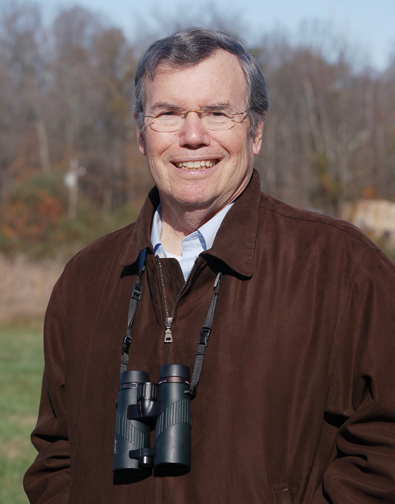 Bob Musil is the President & CEO of the Rachel Carson Council and author of Rachel Carson and Her Sisters: Extraordinary Women Who Have Shaped America’s Environment (Rutgers, 2016) and Washington in Spring: A Nature Journal for a Changing Capital (Bartleby, 2016). He is also the editor of the forthcoming annotated edition from Rutgers University Press of Rachel Carson’s Under the Sea-Wind with his Introduction, updated marine science, and historic and contemporary illustrations and photographs. Bob Musil is the President & CEO of the Rachel Carson Council and author of Rachel Carson and Her Sisters: Extraordinary Women Who Have Shaped America’s Environment (Rutgers, 2016) and Washington in Spring: A Nature Journal for a Changing Capital (Bartleby, 2016). He is also the editor of the forthcoming annotated edition from Rutgers University Press of Rachel Carson’s Under the Sea-Wind with his Introduction, updated marine science, and historic and contemporary illustrations and photographs. | | | | | | North Carolina’s Cape Fear River Is a ‘Forever Chemical’ Hotspot—What Does That Mean for Its Birds and People? Amid mounting global health concerns about PFAS, communities living along the waterway must grapple with how contamination is affecting life on the river. Yet as hard as it is to conduct health studies on humans, it’s even harder with wild animals. South Pelican Island belongs to the birds. Royal Terns circle and screech above this spit of sand and shrub, which juts out of North Carolina’s winding Cape Fear River. | | | | | | | | ‘They have no one to follow’: How Migrating Birds Use Quantum Mechanics to Navigate Evidence is mounting to explain how birds use the Earth’s magnetic field to help fly thousands of miles with unerring accuracy – a discovery that may help advance quantum technology. To the seasoned ear, the trilling of chiffchaffs and wheatears is as sure a sign of spring as the first defiant crocuses. By March, these birds have started to return from their winter breaks, navigating their way home to breeding grounds. | | | | | | | | Trump Just Weakened One of the Nation’s Oldest Environmental Laws The Interior Department has suspended a legal opinion that held companies liable for accidentally killing ducks, cranes, pelicans, owls and hundreds of other bird species. In a memorandum dated Feb. 28 but posted online in recent days, Interior’s acting chief lawyer suspended every legal opinion issued by the Biden administration, including one that subjected companies to penalties for accidentally killing birds through activities such as oil and gas drilling, wind energy production, mining, or construction. | | | | | | | | Birds in Colorado and Nationwide Are Vanishing — Fast Birds that call Colorado's high plains and deserts home are in serious decline, according to a sweeping new conservation report. Birds are indicators of the overall health of their habitats and signal early warnings of broader trouble. If these habitats can't support birdlife, they likely can't sustain other wildlife — or even humans — for long. In the past 50 years, Colorado species like the mountain plover and Baird's sparrow have seen population crashes over 67%. | | | | | | | | The Rio Grande Valley Was Once Covered in Forest. One Man is Trying to Bring it Back. The Tamaulipan thorn forest once covered 1 million acres on both sides of the bor. Restoring even a fraction of it could help the region cope with the ravages of a warming world. Jon Dale’s love affair with birds began when he was about 10 and traded his BB gun for a pair of binoculars. Within a year, he’d counted 150 species flitting through the trees that circled his family’s home in Harlingen, Texas. | | | | | | | | At a Penguin ‘Retirement Home,’ a Slower Pace and Plenty of Fish Six African Penguins at the New England Aquarium in Boston have made a new home on an island designed to address the aches and pains of aging. Good etiquette is expected at meal time in the penguin colony, but the diners with the best manners are found on a new, special island for birds of a certain age. There, geriatric African penguins don’t have to worry about younger birds bombarding the buckets of fish delivered by trainers at the New England Aquarium in Boston. | | | | | | | | Three Easy but Important Ways to Keep Your Bird Feeders Disease-Free Make sure you're helping, not harming, your feathered visitors with these simple steps. Feeding birds is a wonderful way to help avian visitors fuel up for migration or make it through a tough winter. It can also provide great opportunities for wildlife photography and observation. But it’s not enough to put out a feeder and fill it regularly. You need to clean it out, or you risk inadvertently causing the birds that visit to get sick. The same goes for birdbaths. | | | | | | | | SPLASh Coastal Cleanups Program Going Strong at 5 Years This month, SPLASh (Stopping Plastics and Litter Along Shorelines) is celebrating its fifth year in action and the thousands of volunteers, students, and community partnerships helping create cleaner habitats for coastal birds and other wildlife. The program was launched in 2020 by American Bird Conservancy (ABC), Black Cat GIS, and Gulf Coast Bird Observatory to address overlapping trash pollution and wildlife conservation problems along the Texas coast. | | | | | | | | Good News For the Protection of Migrating Birds Earlier this month, lawmakers in South Carolina voted to suspend human visitations to Deveaux Bank, a small island in Charleston County, where tens of thousands of whimbrel shorebirds enjoy a month-or-so layover as they migrate from South America to the Arctic. "Sunday Morning" anchor Jane Pauley reports on conservationists celebrating the closing of the island during bird migration months. | | | | | | | | U.S. Military Aims to Turn Island Bird Refuge Into SpaceX Rocket Site The U.S. military is seeking to turn a remote Pacific wildlife refuge into a landing site for SpaceX rockets, a move that could ultimately advance military capabilities but could also threaten a rare sanctuary for 1.5 million birds. The U.S. Space Force last month announced its intention to build two landing pads on Johnston Atoll, an unincorporated U.S. territory consisting of four tiny islands about 800 miles southwest of Honolulu. | | | | | | | | The Bald Eagle – A True American Success Story The Bald Eagle (Haliaeetus leucocephalus) became the national bird of the United States in 1782, when it was placed on the Great Seal of the USA. It claims the distinction of being the most pictured bird in America, appearing in government institutions, on official documents, on the President’s flag, the “mace” of the House of Representatives, military insignias and, of course, US currency. But it was only recently, during President Biden’s term, that the eagle was made the official national bird of America. | | | | | | | | Rachel Carson’s Legacy Endures at Bear River Tundra Swans begin to flock to northern Utah’s wetlands in early March, their snow-white bodies often blending with skies still frosted over from February. The Great Salt Lake’s wetlands are the perfect vacation homes on their journey to Canada and Alaska, full of food and space to rest. Tundra swans, in a way, are my spark bird. I hadn’t truly committed myself to the life of a birder until a seasoned birder took me to the Bear River Migratory Bird Refuge. | | | | | | | | | | How Do Bird Nests Stay Together? The concept of constructing a self-supporting structure made of rods—without the use of nails, ropes, or glue—dates back to Leonardo da Vinci. In the Codex Atlanticus, da Vinci illustrated a design for a self-supporting bridge across a river, which can be easily demonstrated using toothpicks, matches, or chopsticks. However, this design is fragile. In contrast, bird nests—which are also self-supporting structures consisting of rigid sticks and twigs—are remarkably stable despite continuous disturbances such as wind, ground vibrations, and the landing or takeoff of birds. What makes bird nests so sturdy? | | | | | | | | Eclipse Echoes: Study Reveals Surprising Avian Vocal Patterns During solar Eclipse A study published in Scientific Reports reveals how birds responded to the April 8, 2024, total solar eclipse across North America. The study finds bird vocalizations significantly declined only where more than 99% solar obscuration occurred. The study is titled "Continental-scale behavioral response of birds to a total solar eclipse." Researchers from Loggerhead Instruments, Inc. and the K. Lisa Yang Center for Conservation Bioacoustics at the Cornell Lab of Ornitholog. | | | | | | | | A Hit of Dopamine Tells Baby Birds When Their Song Practice is Paying Off In his home office in Durham, Duke neuroscientist Richard Mooney shows a series of images of a bird's brain on song. In one, what looks like a pointillist painting illustrates a young zebra finch's myriad attempts to sound more like an adult, capable of wooing a mate. In another, squiggly lines trace the ebb and flow of chemical signals in the reward circuit of the bird's brain. "Their songs don't sound like much at first," said Mooney, who has studied birdsong for four decades. | | | | | | | | Fantastic Journeys: Shorebirds Are Next-Level Athletes Shorebirds are the undisputed marathon champions among migratory birds. About 20 species of shorebirds have been recorded making nonstop flights longer than 5,000 kilometers, or 3,100 miles—about the distance from Boston to San Francisco. No other species of migratory bird has been recorded completing a nonstop flight longer than 4,000 km. The longest known shorebird flights—about 12,000 kilometers and nine days in length—belong to the Bar-tailed Godwit during its migration from Alaska to New Zealand. | | | | | | | | ‘Oh, Wow!’—Stunning Photos Offer First Known Proof of Vermilion Flycatchers Fishing An Arizona photographer’s images of Vermilion Flycatchers and Black Phoebes catching and eating fish—and one unlucky lizard—provide a rare glimpse into a little-known side of both birds. Capturing a rare behavior is the highlight of any nature photographer’s day in the field, but capturing a behavior that has never been documented before? That’s a whole different level. | | | | | | | | The Art of Birds, The Science of Birds Art and science are two great human endeavors driven by parallel forces: our persistent curiosity and our vivid imagination. Both have long found a home at the Cornell Lab of Ornithology. Art and science might be humankind’s two most noble enterprises, and they have lived culturally hand-in-hand ever since our first applications of paint to depict animals, people, and action on the walls of caves. | | | | | | | | Top 5 Most Beautiful Bird Songs of North America There are many gorgeous bird songs in North America, but these five are especially beautiful. The Western Meadowlark, Wood Thrush, and Rose-breasted Grosbeak are all contenders, but which one will be number 1? What would the world be like without bird song? They add vibrance to any outdoor experience | | | | | | | | Good News: Smart Bird Feeders Spark New Generation of Bird-watchers The revolution of smart bird feeders equipped with cameras are giving a whole new meaning to "bird's eye view," and sparking a renewed interest in bird watching with the beautiful images they capture. NBC News' Hallie Jackson has the story. | | | | | | | | The Search for One of North America’s Rarest Birds Scientists must journey to remote islands in the middle of the Bering Sea, braving uncertain conditions, to reach the breeding grounds of McKay's Buntings. In the middle of Alaska’s Bering Sea, St. Matthew Island and its much smaller neighbor Hall Island are among the few specks of land amid hundreds of square miles of water. These uninhabited volcanic isles host an impressive array of Arctic birds, including one of North America’s most enigmatic species: the McKay’s Bunting, which breeds only here. | | | | | | | | DEP Falcon Cam to Feature Live Hatching in Harrisburg Peregrine falcons have made the 15th floor of the Rachel Carson State Office building in downtown Harrisburg, and the public can now watch them live as their eggs get closer to hatching. According to the Pennsylvania Department Environmental Protection (DEP), these birds have made the Rachel Carson State Office building their home for multiple years, but this one is special. | | | | | | | | Spring is Hummingbird Migration Season: Interactive Map Shows Where You Can See Them As North America emerges from winter, hummingbirds are embarking on great migrations that could pass through your area soon. The small birds, known for their long beaks and ultra-fast wings that make them look like they're floating, begin heading north in late winter. Some species, like the Calliope Hummingbird, travel more than 5,000 miles each year, according to the American Bird Conservancy. | | | | | | | | Celebrate World Migratory Bird Day DATE: MAY 8, 2025 • TIME: 5 - 7 PM LOCATION: RAYBURN HOUSE OFFICE BUILDING FOYER Please Join the National Audubon Society In conjunction with The ICCF Group on Thursday, May 8 as we celebrate World Migratory Bird Day This year's theme is Shared Spaces: Creating Bird-Friendly Cities and Communities. The event will highlight migratory bird conservation across the hemisphere. Further details on programming to come. | | | | | | | | Enjoy Birdwatching By Going to Festivals A great way to enjoy birdwatching is by going to festivals—they’re organized to get you to well-known birding spots at the right time of year, and they’re a perfect way to meet people. Experts and locals help you see more birds, and you’ll meet other visitors who share your hobby. While you’re there, keep an eye out for Cornell Lab representatives, as we do attend several festivals each year. | | | | | | | | Northern Bobwhite The distinctive call of the Northern Bobwhite was once a common sound throughout most of America. Sadly their numbers have plummeted over the last 50 years mostly due to the usual culprits, habitat loss and pesticides. It is estimated the number of these members of the quail family have declined by a whopping 85% according to the United States Geological Survey (USGS). A large group of quail is called a “bevy” while a small group is called a “covey.” | | | | | | | | Momentary Meditations are published every Monday to awaken what Rachel Carson called “the sense of wonder” and what Albert Schweitzer called “a reverence for life.” Looking deeply into our interdependence with all life on earth helps us know what we must do. In our harried world, these meditations are meant to serve as a renewable resource for compassion and love. Feeling the Spirit – Stephen Shick Sometimes when the pace slows you can feel the spirit of life rise through you it is then you know you are alive | | | | | | | | | | Starlings: The Curious Odyssey of a Most Hated Bird (Bison Books, 2025)
By Mike Stark 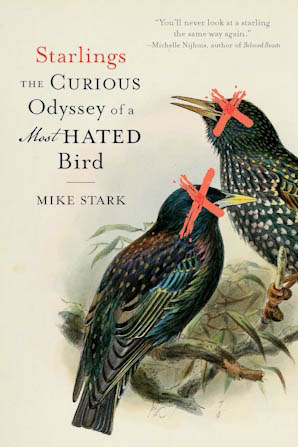 Should we progressives care about the fate of immigrants brought to the United States against their will? Can they even dream of citizenship? Should we progressives care about the fate of immigrants brought to the United States against their will? Can they even dream of citizenship?
Rachel Carson, with her excess of empathy for all living creatures thought so. In her days freelancing articles to get more income while working at the U.S. Fish and Wildlife Service (USFWS), Carson wrote in praise of the hated starling in the June-July issue of Nature in 1939. In the days before ICE, she wrote “ornithologists pretty well agree that the starling is here to stay. Shall we continue to regard him as an alien or shall we conclude that his successful pioneering and his service in insect destruction entitles him to American citizenship?”
Journalist and author Mike Stark picks up from Carson’s 1930s fascination and empathy for the starling. But his Starlings: The Curious Odyssey of a Most Hated Bird is most like Carson in its luminous and polished prose, its wide-ranging research, and its careful observations of birds and people, of the context and interactions of starlings and humans in society. From his opening tale of the huckster called “The Bird Man,” who charged generous fees and brought aluminum paddles, a noisy chime and a secret, locked box to 1950s towns and cities desperate to rid themselves of the scourge starlings, Stark has, incredibly enough, written a page turner about an awkward, alien bird and Americans’ reaction to it. You will not put Starlings down until, like Mozart, you keep one as a pet singing his Piano Concerto Number 17 in C. Read more | | | | | | | | Bird Lore
The Myths, Folklore and Meaning of Birds
By Sally Coulthard 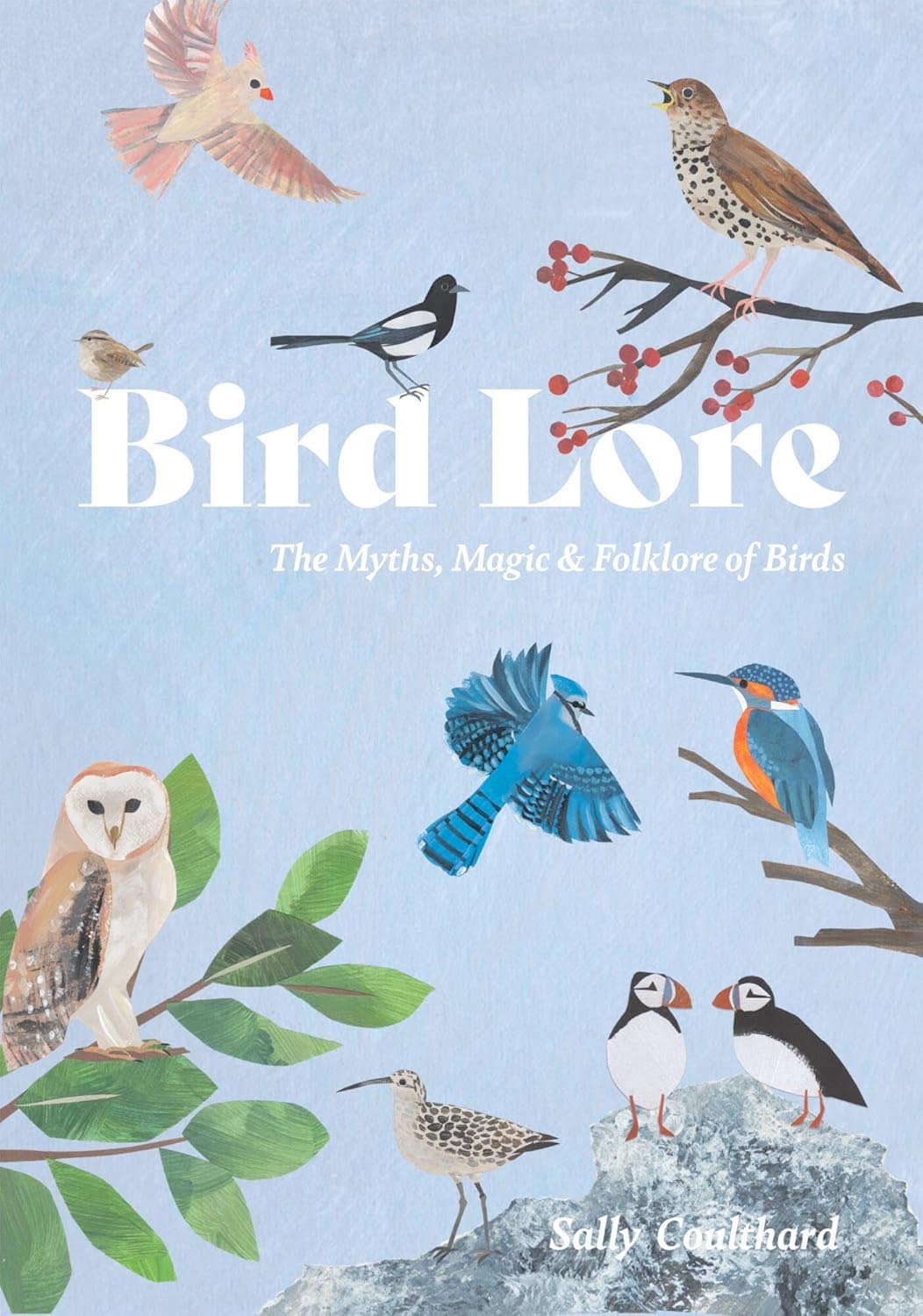 From bestselling author, Sally Coulthard, comes this charmingly illustrated guide to our favourite feathered friends and folklore that surround their lives. From bestselling author, Sally Coulthard, comes this charmingly illustrated guide to our favourite feathered friends and folklore that surround their lives.
Even today, birds are hugely symbolic. From songbirds to seagulls, nightingales to morning larks, we still use the cultural language of the avian world. Doves bring peace, storks carry newborn babies. Robins mark Christmas, hens Easter. Blackbirds and thrushes herald the dawn, owls welcome in the night. Even in our modern, rational world, magpies and peacocks still invite superstitions.
In her new book, Sally takes a fascinating flight through the myths, magic and meaning of birds. Covering 50 well-loved avian species from across the world, she glides through their folklore, legends and symbolism. From common sayings to strange superstitions, ancient beliefs to modern celebrations, this gloriously illustrated and international guide reveals that Bird Lore is as alive and vibrant as it ever was. Read more and purchase | | | | The April 2025 issue of Bird Watch and Wonder was produced by Ross Feldner | | | |  The Rachel Carson Council Depends on Tax-deductible Gifts From Concerned Individuals Like You. Please Help If You can. The Rachel Carson Council Depends on Tax-deductible Gifts From Concerned Individuals Like You. Please Help If You can. | | | |  Sign Up Here to Receive the RCC E-News and Other RCC Newsletters, Information and Alerts. Sign Up Here to Receive the RCC E-News and Other RCC Newsletters, Information and Alerts. | | | | | | | | | | | |